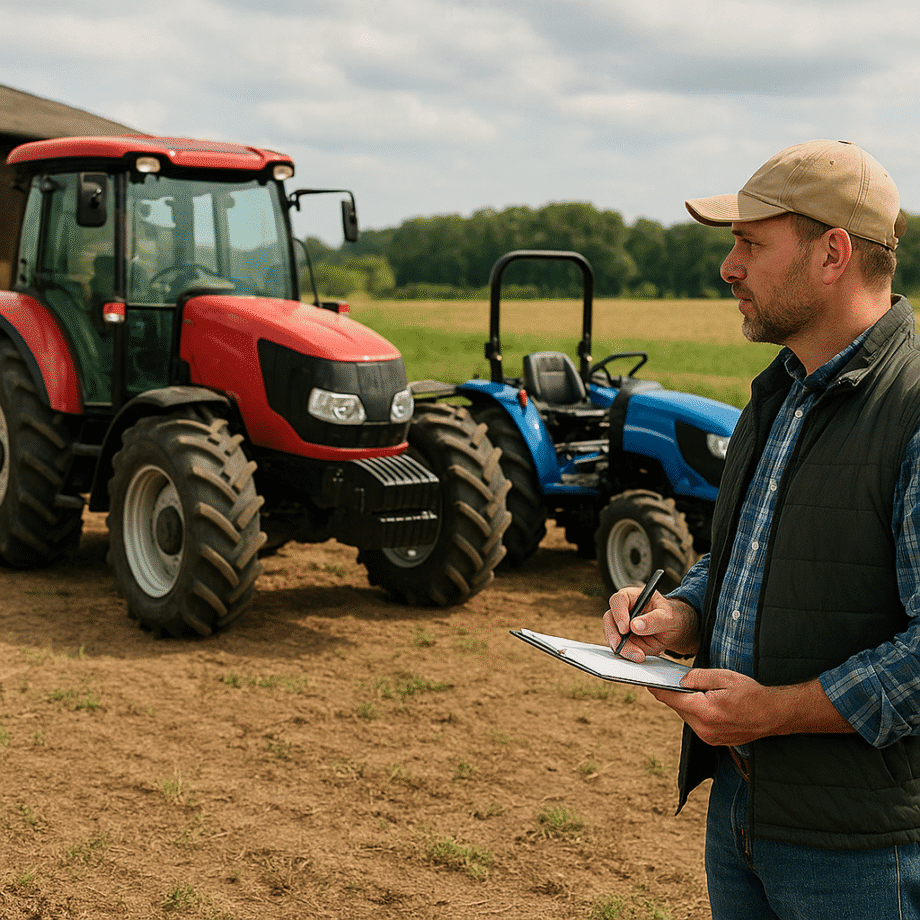Selecting the optimal agricultural equipment can transform your farm’s operations, boosting productivity and ensuring long-term success. Tractors stand at the heart of modern farming, serving as versatile workhorses that power a range of tasks from tillage to hauling. Whether you manage a compact vegetable plot or an extensive grain operation, understanding how to choose the right tractor for your needs is crucial. This guide delves into the essential considerations for aligning tractor specifications with your farm’s unique requirements.
Introduction to Agricultural Machinery Selection
Farmers rely on a diverse fleet of machinery to handle planting, cultivation, and harvesting. The central piece of this fleet is the tractor—a modular platform that interfaces with various attachments and implements. Choosing the wrong model can lead to wasted time, higher costs, and suboptimal field performance. This section explores why tractor selection demands a strategic approach, considering factors from horsepower ratings to attachment compatibility.
- Versatility – Ability to handle multiple tasks
- Reliability – Minimizing downtime and repair costs
- Cost-efficiency – Balancing initial investment with long-term savings
Key Factors in Choosing the Right Tractor
Engine Power and Horsepower Ratings
Engine size directly influences a tractor’s pulling capacity and its ability to power hydraulic systems. When assessing horsepower requirements, consider:
- Primary tasks (e.g., plowing, baling, spraying)
- Size and weight of implements
- Field conditions and terrain challenges
For small-acreage operations, 20–50 horsepower may suffice, while larger grain or livestock farms often demand 100+ horsepower for heavy-duty tillage.
Transmission Options
Modern tractors offer various transmission types—gear-driven, hydrostatic, or continuously variable transmissions (CVT). Each provides distinct advantages:
- Gear-driven: Robust and efficient at fixed speeds
- Hydrostatic: Smooth speed control, ideal for loader work
- CVT: Seamless acceleration and efficiency across speed ranges
Hydraulics and PTO Compatibility
Three-point hitch and power take-off (PTO) systems define the range of compatible attachments. Evaluate hydraulic flow rates and PTO speed (540 vs. 1000 rpm) to ensure your tractor can operate specialized equipment like sprayers or balers without strain.
Ergonomics and Operator Comfort
Long hours in the field require a comfortable cabin equipped with adjustable seats, intuitive controls, and effective climate management. Modern cabs may include air suspension, touchscreen displays, and noise reduction features to enhance productivity.
Aligning Tractor Features with Farm Sizes
Farm size dictates the scale of machinery needed. Below are guidelines for matching tractor classes to acreage:
Small Farms and Market Gardens
- Horsepower: 20–50 hp
- Key Features: Compact size for maneuvering, narrow tread options, basic hydraulics
- Ideal Tasks: Mowing, light tillage, transplanting, horticultural applications
Medium-Sized Farms (50–300 Acres)
- Horsepower: 50–100 hp
- Key Features: Enhanced hydraulic capacity, mid-size loaders, optional cab
- Ideal Tasks: Cultivation, baling, fertilizer spreading, row-crop planting
Large-Scale Operations (300+ Acres)
- Horsepower: 100–300+ hp
- Key Features: Advanced cab technology, high-capacity hydraulics, dual-wheel or tracks
- Ideal Tasks: Deep plowing, large planters, high-volume hauling, irrigation support
Consider seasonal peaks: a smaller but powerful unit may handle off-peak chores, while a high-powered tractor tackles intensive periods of planting and harvest.
Implementing Best Practices for Maintenance and Operations
Longevity of your investment hinges on proactive care. Establish a routine service schedule covering oil changes, filter replacements, and fluid checks. Key maintenance tips include:
- Daily Inspections – Check tire pressure, belts, and hydraulic lines
- Scheduled Servicing – Follow manufacturer intervals for engine and transmission fluids
- Record Keeping – Log hours and maintenance actions to track performance trends
Adopting precision farming tools—GPS guidance, telematics, and real-time diagnostics—elevates innovation and optimizes field efficiency. Intelligent systems can alert you to developing issues, reducing downtime and repair expenses.
Strategies for Enhancing Farm Sustainability
Environmental stewardship is increasingly vital. Selecting eco-friendly tractors with low-emission engines and efficient fuel consumption supports sustainable agriculture. Practices to consider:
- Low-Compaction Tires – Minimize soil disturbance and preserve structure
- Variable Rate Technology – Apply inputs only where needed
- Idle Reduction Systems – Conserve fuel during non-operational periods
Integrating renewable energy solutions, such as solar-powered charging stations for electric or hybrid tractors, can reduce carbon footprint and operating costs.
Evaluating Total Cost of Ownership
Beyond sticker price, calculate expenses over the tractor’s lifespan:
- Purchase Cost – Base price plus optional attachments
- Operating Expenses – Fuel, oil, and consumables
- Service and Repair – Warranty coverage vs. out-of-pocket maintenance
- Resale Value – Brand reputation and demand for used models
Financing plans, leasing options, and government incentives may offset initial outlays, making high-capacity machines accessible to a wider range of farmers.
Future Trends in Tractor Technology
The agricultural sector is on the cusp of transformative change. Emerging trends include:
- Autonomous Tractors – Automated field operations reduce labor demands
- Electrification – Battery and hybrid models offer quieter, cleaner performance
- Smart Connected Machines – Real-time data exchange with farm management software
Staying informed about technological advancements positions your operation to leverage the latest reliability and performance enhancements.
